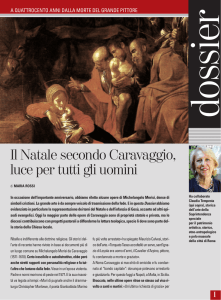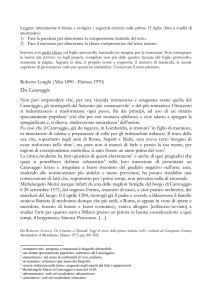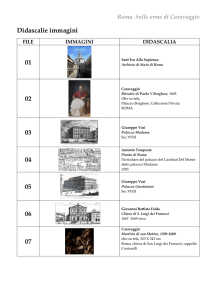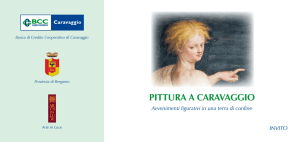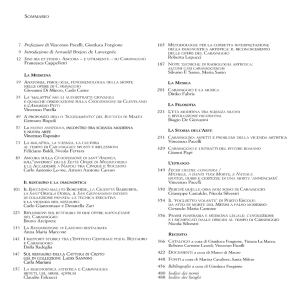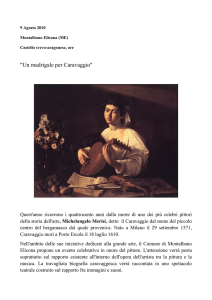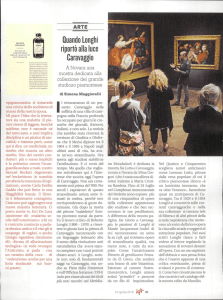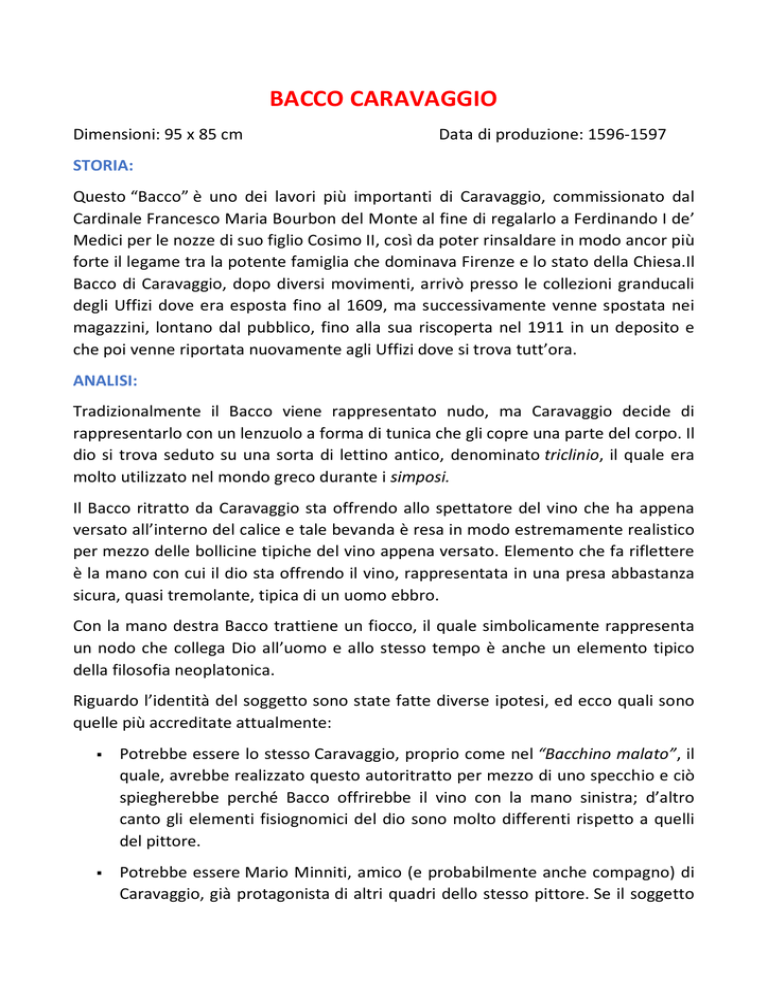
BACCO CARAVAGGIO
Dimensioni: 95 x 85 cm
Data di produzione: 1596-1597
STORIA:
Questo “Bacco” è uno dei lavori più importanti di Caravaggio, commissionato dal
Cardinale Francesco Maria Bourbon del Monte al fine di regalarlo a Ferdinando I de’
Medici per le nozze di suo figlio Cosimo II, così da poter rinsaldare in modo ancor più
forte il legame tra la potente famiglia che dominava Firenze e lo stato della Chiesa.Il
Bacco di Caravaggio, dopo diversi movimenti, arrivò presso le collezioni granducali
degli Uffizi dove era esposta fino al 1609, ma successivamente venne spostata nei
magazzini, lontano dal pubblico, fino alla sua riscoperta nel 1911 in un deposito e
che poi venne riportata nuovamente agli Uffizi dove si trova tutt’ora.
ANALISI:
Tradizionalmente il Bacco viene rappresentato nudo, ma Caravaggio decide di
rappresentarlo con un lenzuolo a forma di tunica che gli copre una parte del corpo. Il
dio si trova seduto su una sorta di lettino antico, denominato triclinio, il quale era
molto utilizzato nel mondo greco durante i simposi.
Il Bacco ritratto da Caravaggio sta offrendo allo spettatore del vino che ha appena
versato all’interno del calice e tale bevanda è resa in modo estremamente realistico
per mezzo delle bollicine tipiche del vino appena versato. Elemento che fa riflettere
è la mano con cui il dio sta offrendo il vino, rappresentata in una presa abbastanza
sicura, quasi tremolante, tipica di un uomo ebbro.
Con la mano destra Bacco trattiene un fiocco, il quale simbolicamente rappresenta
un nodo che collega Dio all’uomo e allo stesso tempo è anche un elemento tipico
della filosofia neoplatonica.
Riguardo l’identità del soggetto sono state fatte diverse ipotesi, ed ecco quali sono
quelle più accreditate attualmente:
Potrebbe essere lo stesso Caravaggio, proprio come nel “Bacchino malato”, il
quale, avrebbe realizzato questo autoritratto per mezzo di uno specchio e ciò
spiegherebbe perché Bacco offrirebbe il vino con la mano sinistra; d’altro
canto gli elementi fisiognomici del dio sono molto differenti rispetto a quelli
del pittore.
Potrebbe essere Mario Minniti, amico (e probabilmente anche compagno) di
Caravaggio, già protagonista di altri quadri dello stesso pittore. Se il soggetto
fosse davvero Minniti, allora l’opera avrebbe un nuovo significato
omosessuale.
Altri studiosi intravedono nella figura di Bacco lo stesso Cristo redentore, il
quale offre il vino utilizzato durante l’Ultima Cena rappresentante il sangue di
Dio e allo stesso tempo elemento che ricorda il sacrificio di quest’ultimo.
Qualunque sia l’identità del Bacco, c’è un altro elemento da tenere in
considerazione ed emerso solo grazie all’ausilio delle moderne tecnologie:
sembrerebbe infatti che nella caraffa di vino presente all’interno di questa
composizione si possa individuare il volto di un uomo riconducibile ad un
autoritratto di Caravaggio.
Quale sia attualmente la verità riguardo l’identità di Bacco è ancora un mistero, ma
la bellezza di questo quadro è veramente indiscutibile, quindi se ne avete possibilità,
recatevi agli Uffizi a Firenze ad ammirare questo capolavoro di Caravaggio e tutte le
altre opere presenti in questo magnifico museo.
INGLESE
Dimensions: 95 x 85 cm
Production date: 1596-1597
HISTORY:
This "Bacchus" is one of the most important works by Caravaggio, commissioned by
Cardinal Francesco Maria Bourbon del Monte in order to give it to Ferdinand I de
'Medici for the wedding of his son Cosimo II, so as to strengthen in an even stronger
link between the powerful family that ruled Florence and the state of the Church.
Caravaggio's Bacchus, after several movements, arrived at the grand ducal
collections of the Uffizi where he was exposed until 1609, but was later moved in
warehouses, away from the public, until its rediscovery in 1911 in a warehouse and
then was brought back to Uffizi where he is still.
ANALYSIS:
Traditionally the Bacchus is depicted naked, but Caravaggio decides to represent
him with a shaped sheet of tunic that covers part of the body. The god is sitting in a
sort of old bed, called triclinium, which was widely used in the greek world during
the symposia.
The portrait by Caravaggio Bacchus is offering the wine spectator who has just
poured into the cup, and that drink is made in an extremely realistic way by means
of the typical bubbles freshly poured wine. Element sobering is the hand that God is
offering the wine, represented in a fairly firm grip, almost trembling, typical of a
drunken man.
With Bacchus right hand holds a bow, which symbolically represents a node that
connects God to man and at the same time it is also a typical element of the NeoPlatonic philosophy.
About the identity of the subject different assumptions were made, and, behold,
what are the most currently accredited:
1 It could be the same as Caravaggio, just like in the "Sick Bacchus", which, he
realized this self-portrait using a mirror and this would explain why Bacchus would
provide the wine with his left hand; on the other hand, the physiognomic elements
of God are very different from those of the painter.
2 It could be Mario Minniti, a friend (and probably mate) by Caravaggio, former star
of other paintings by the same painter. If the subject was really Minniti, then the
work would have a new meaning homosexual.
3 Other scholars glimpsed the figure of Bacchus the same Christ the Redeemer,
which gives the wine used at the Last Supper, representing the blood of God and at
the same time element that recalls the sacrifice of the latter.
Whatever the identity of Bacchus, there is another factor to be taken into account
and only emerged with the help of modern technology: in fact, it would seem that in
this carafe of wine within this composition can identify the face of a man linked to a
self-portrait of Caravaggio.
Which is currently the truth about the identity of Bacchus it is still a mystery, but the
beauty of this picture is really indisputable, so if you have opportunity, go to the
Uffizi in Florence to admire this masterpiece by Caravaggio and all other works on
this magnificent museum.

